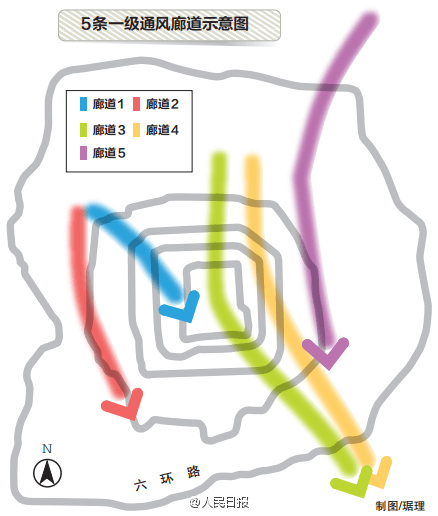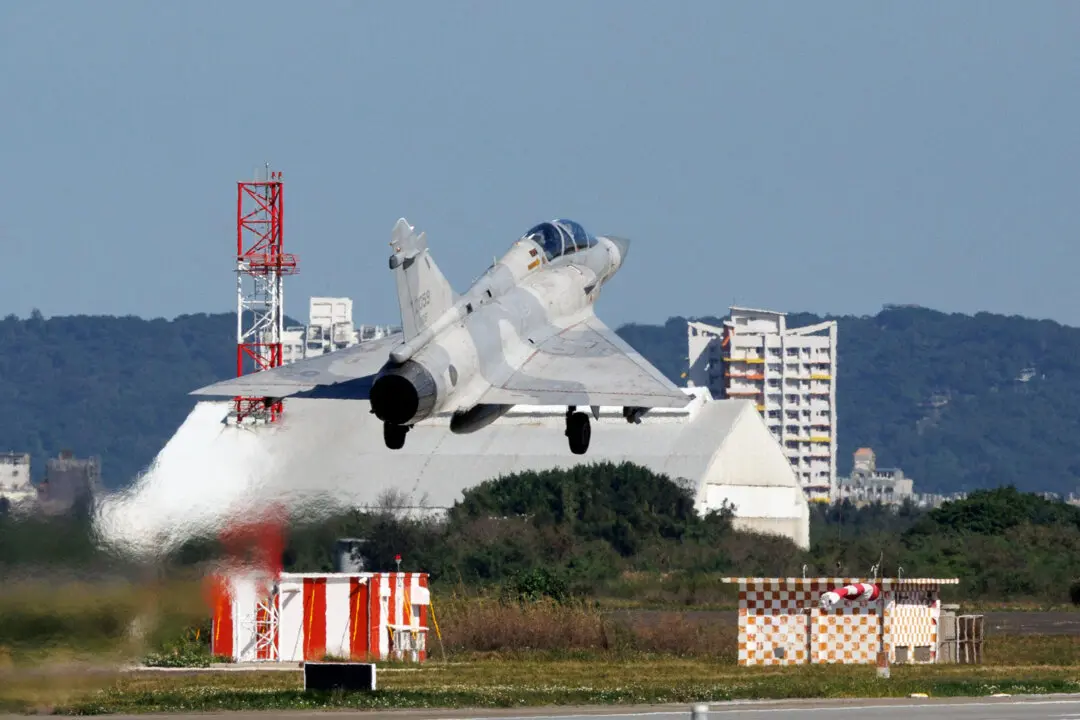The authorities in Beijing have a brainwave for solving the Chinese capital’s crippling air pollution—direct the gray miasma out of the city via urban engineering. But the fetid fumes will likely plague nearby areas, argue concerned Chinese citizens.
Wang Fei, the deputy head of Beijing’s urban planning authority, said that a “ventilation network” would be constructed in Beijing to facilitate air flow and divert smog and other pollutants out of the city, according to a Feb. 20 report on the official Beijing government’s website.

Image of the five projected "wind channels" on the sociali media account of the People's Daily. Sina Weibo





